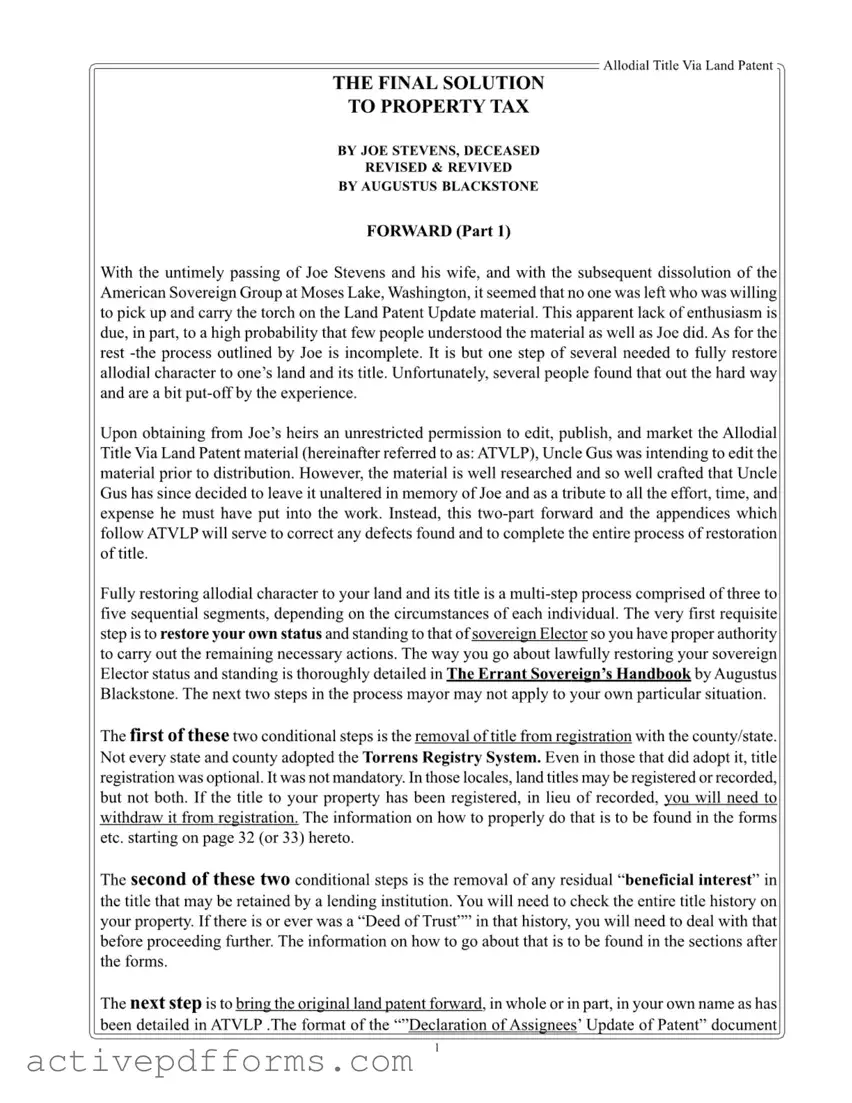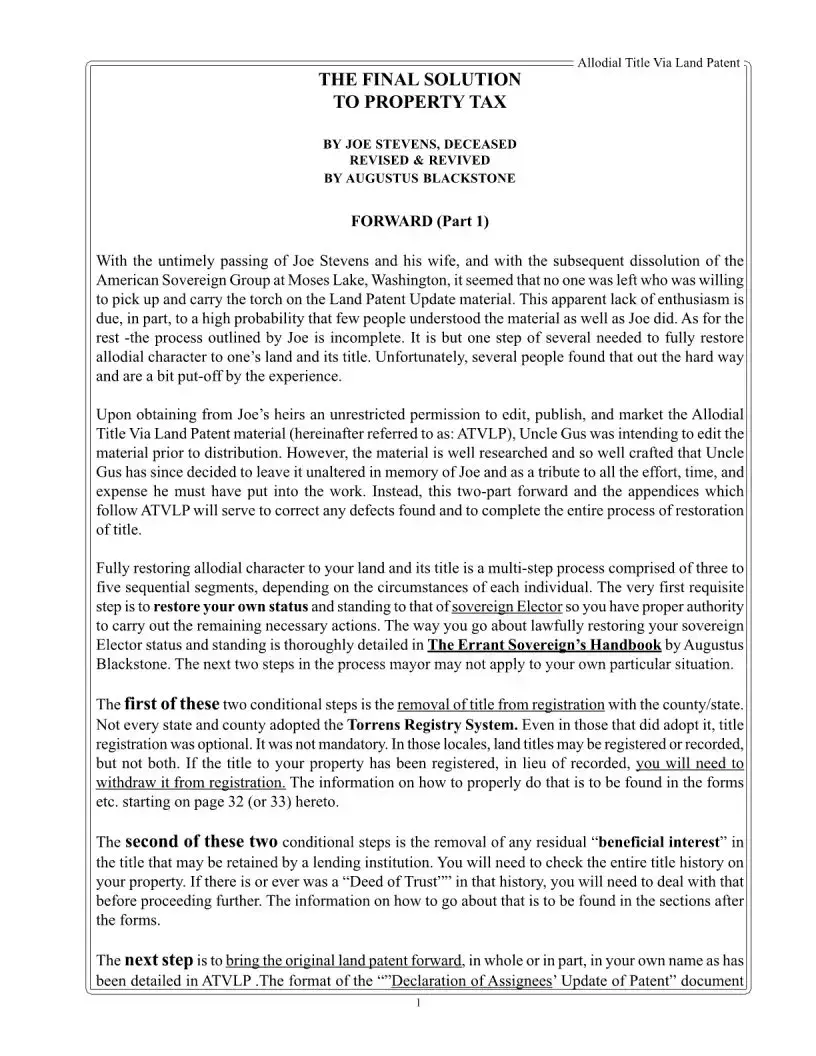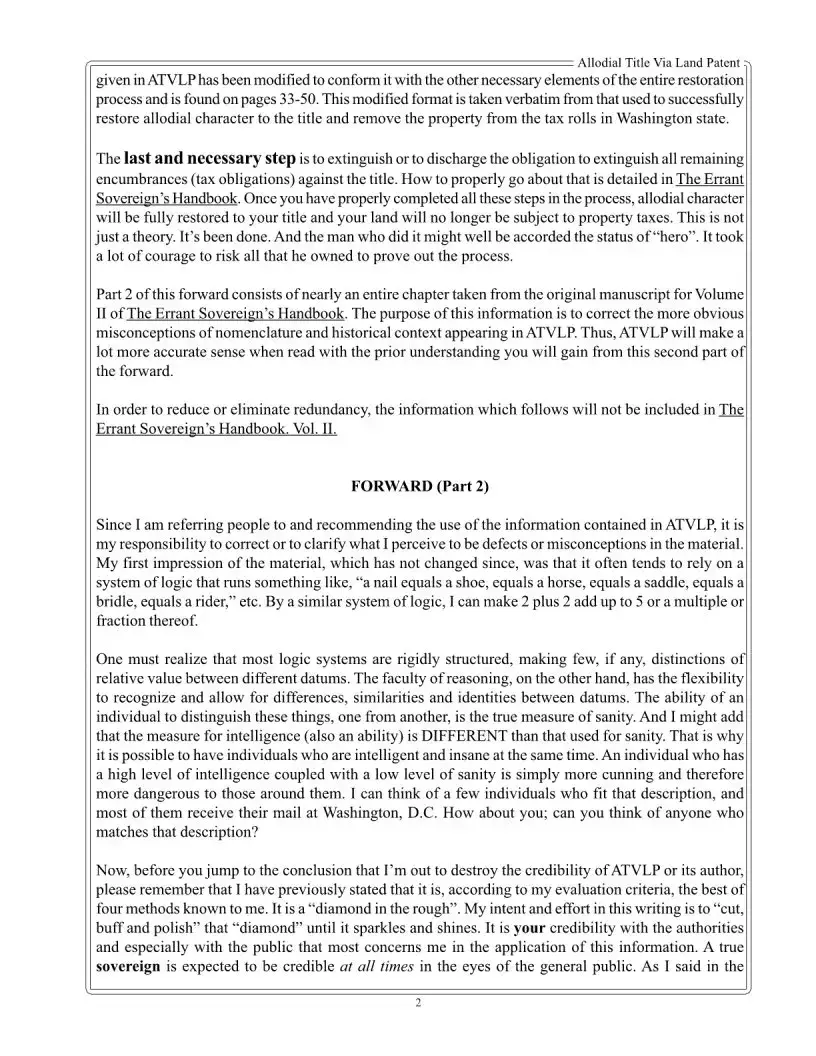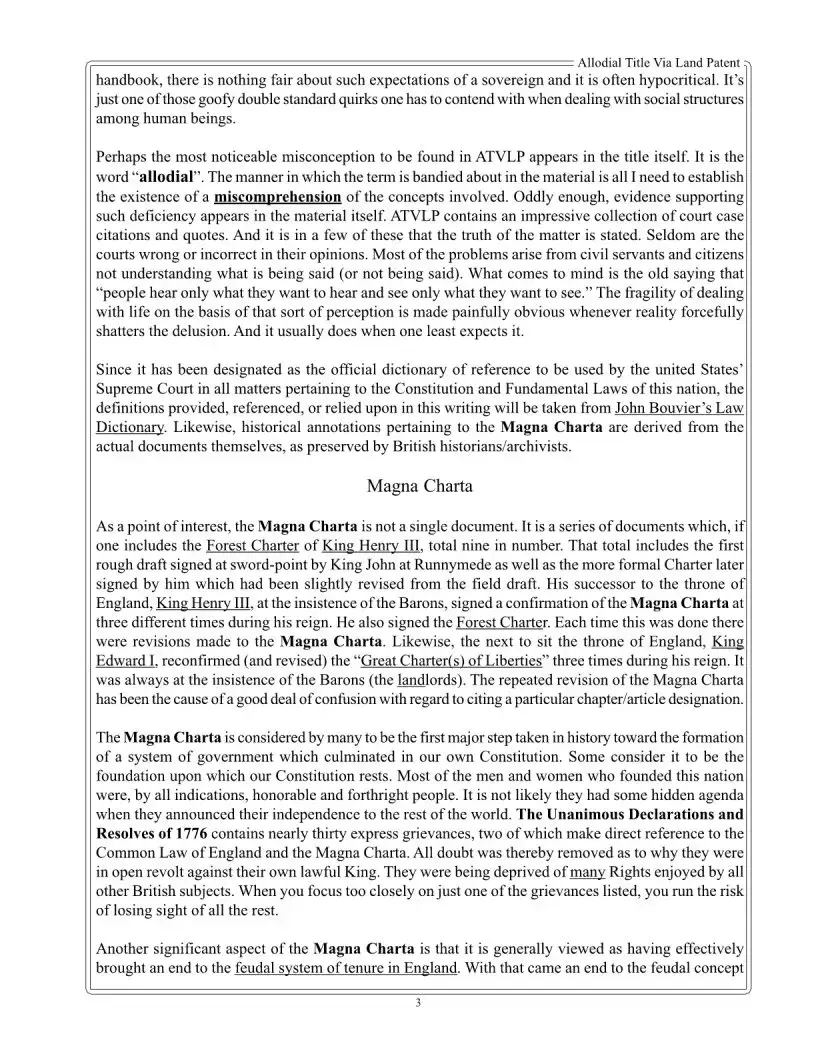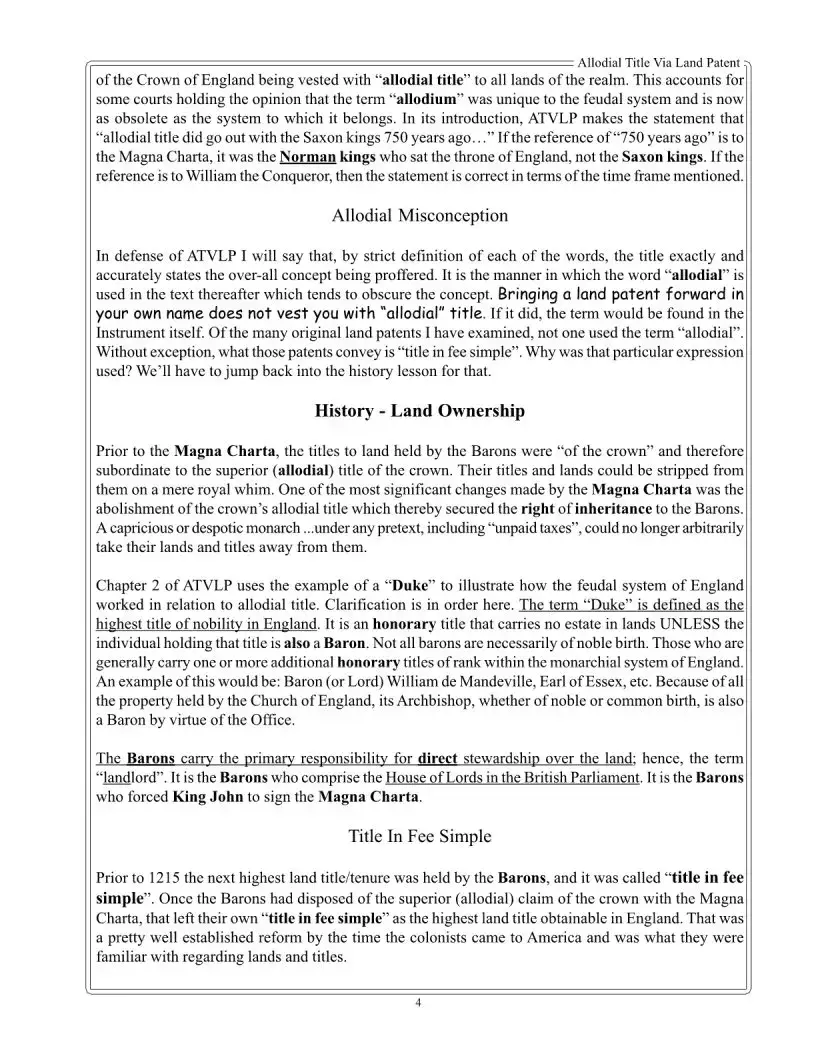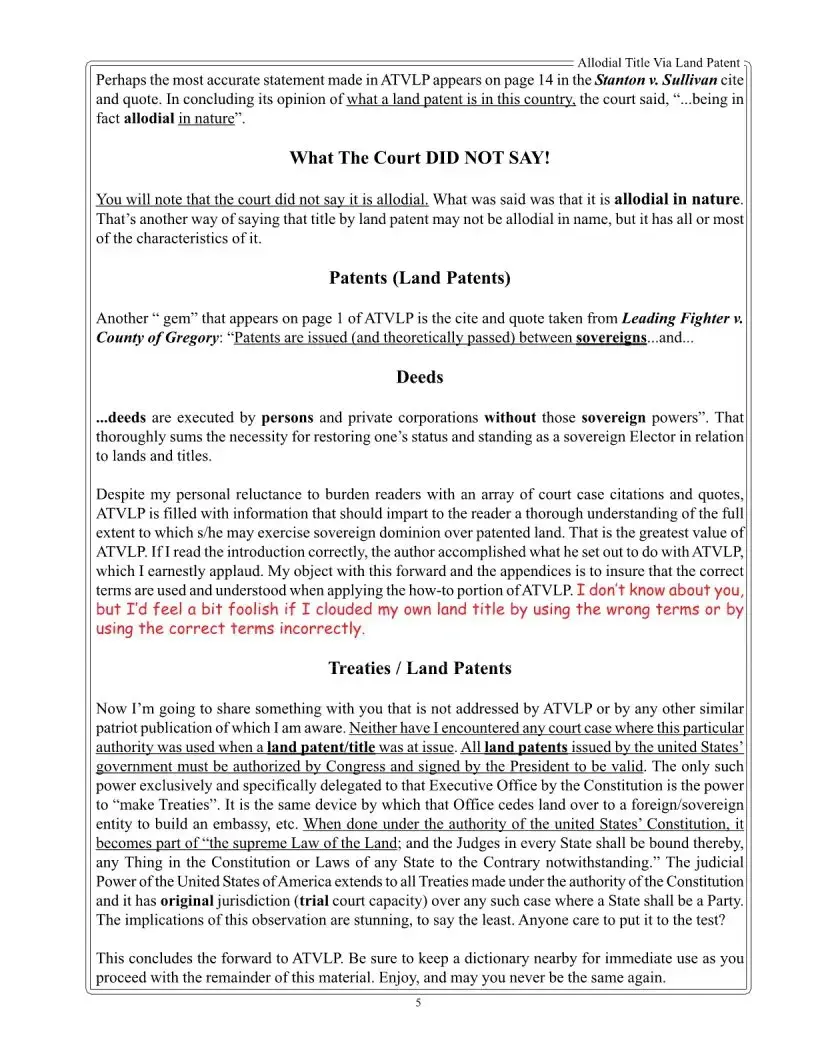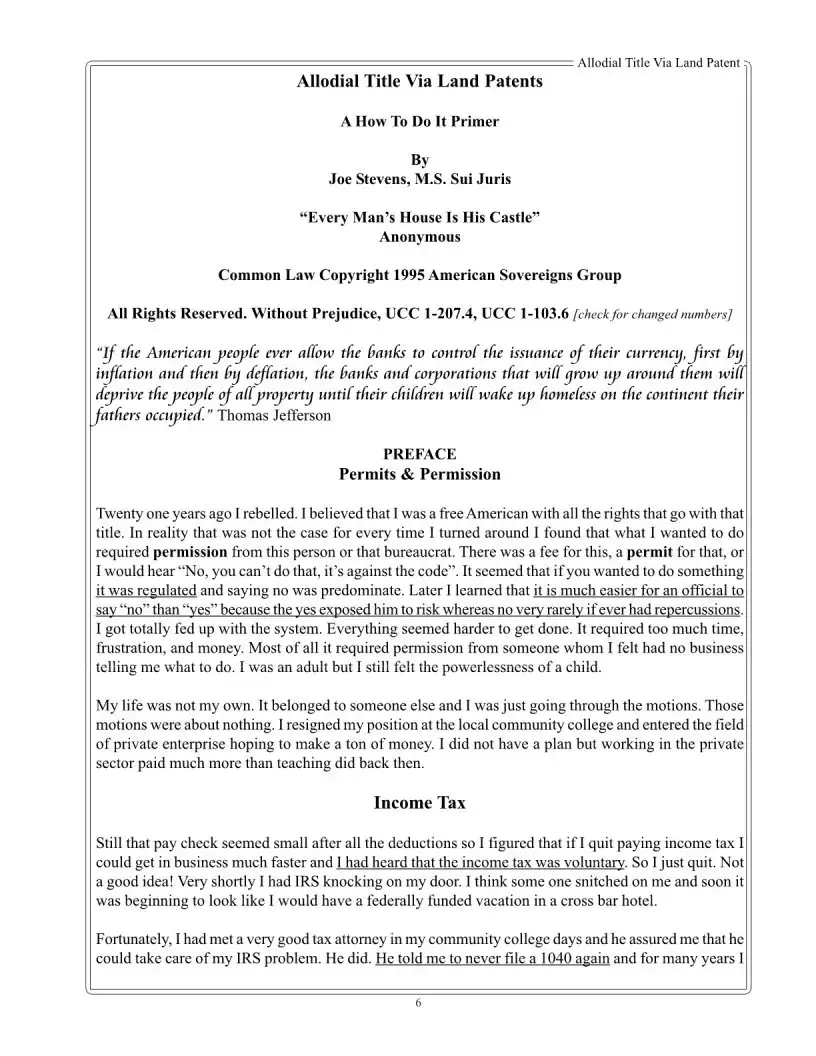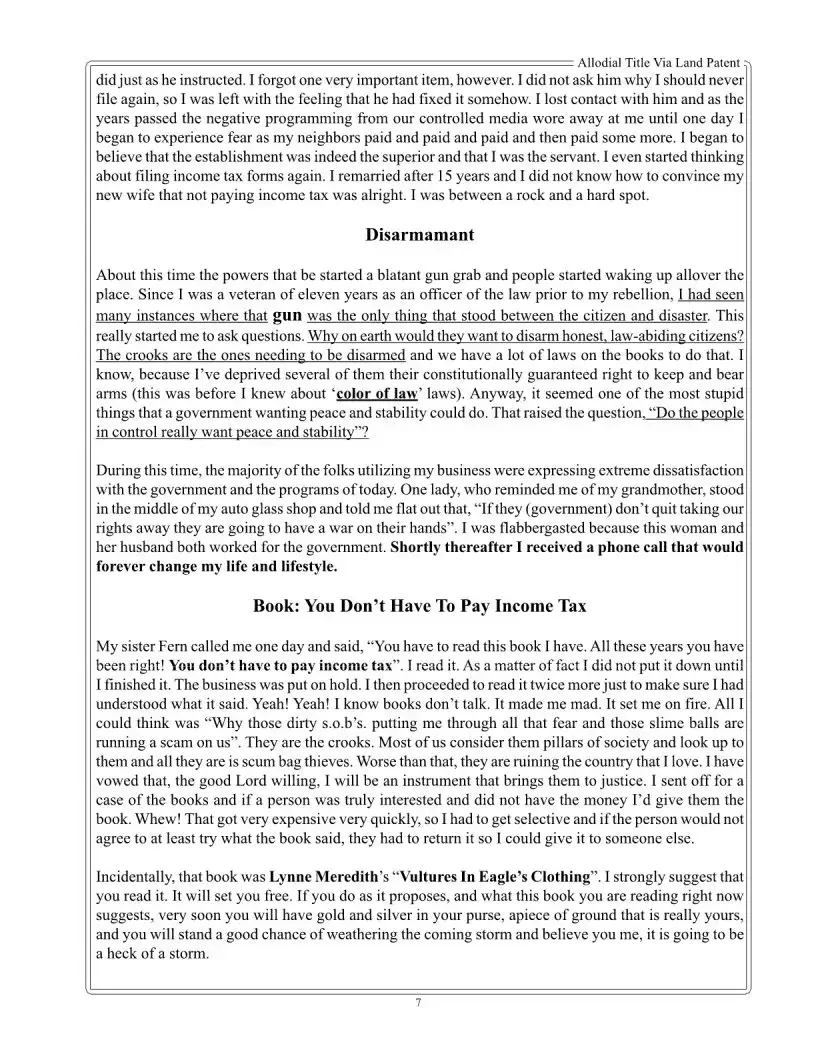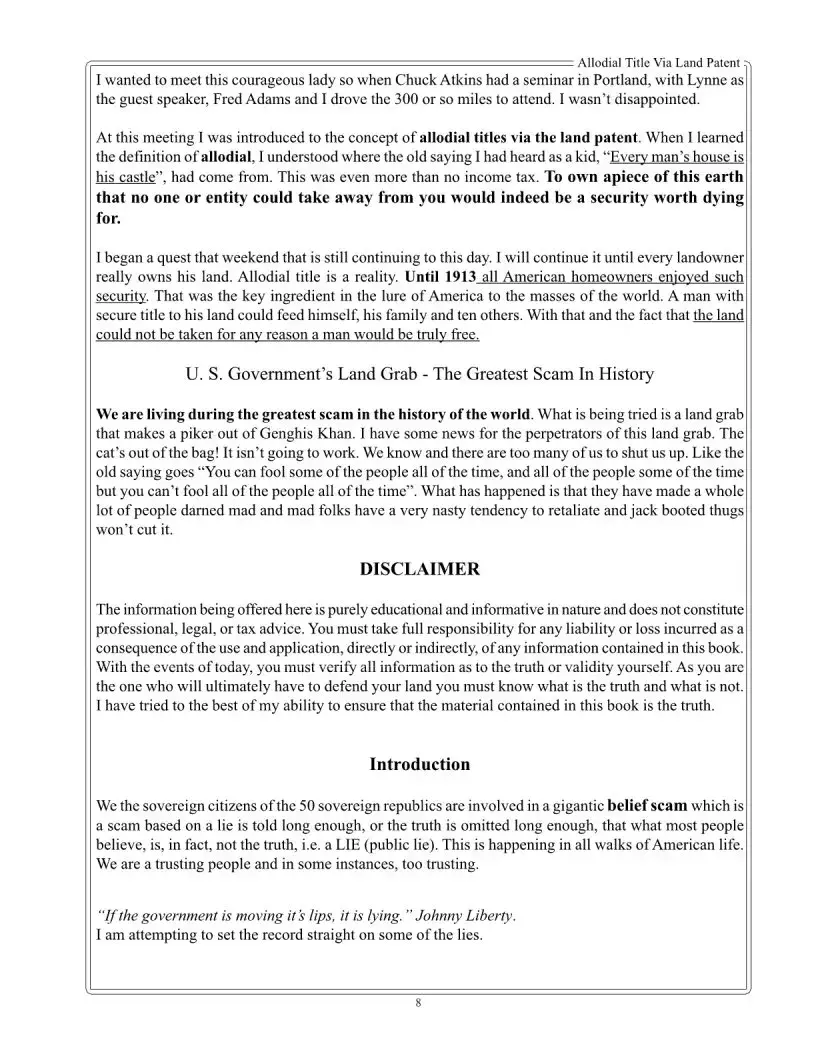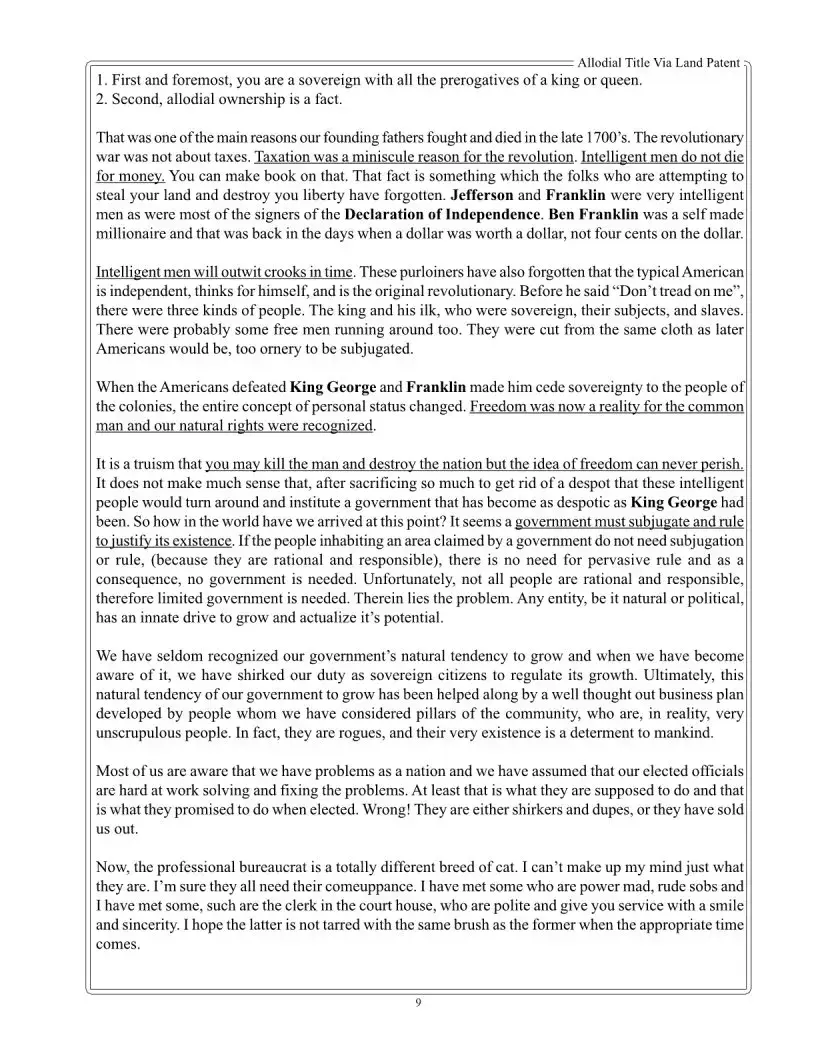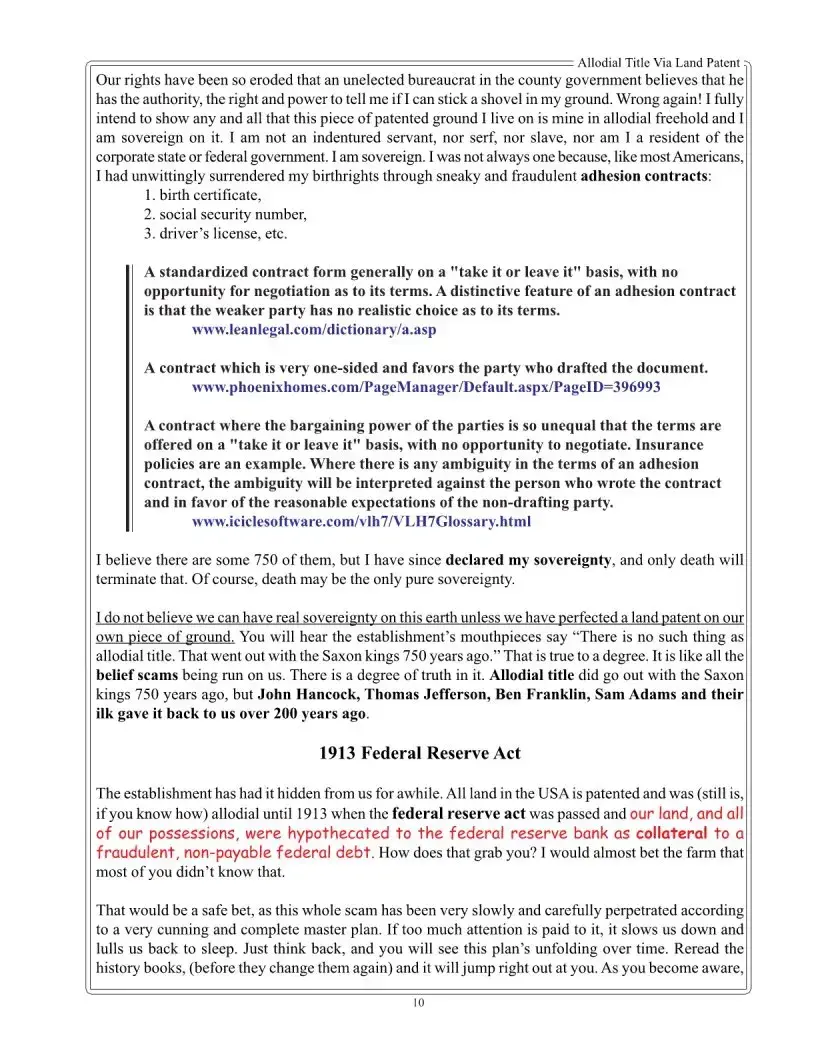In a landscape where the complexities surrounding property ownership and the quest for autonomy over one’s land remain a labyrinthine realm of legal challenges, the concept of Allodial Title via Land Patent emerges as a beacon for those disillusioned with conventional property taxation systems. This methodology, meticulously crafted and subsequently revived by Augustus Blackstone after Joe Stevens's untimely demise, ventures beyond the realm of conventional understanding into a multi-step process purportedly liberating landowners from the grip of property taxes. By tracing the roots of property ownership back to its allodial origins—where land is held free and clear of any overlord’s demands—the text offers an intricate blueprint towards achieving a rare form of title. Yet, this path is fraught with conditions and a prerequisite restoration of one’s status to that of a sovereign elector, along with the potential withdrawal from the Torrens Registry System and the nullification of any lingering beneficial interests held by financial institutions. Even more, the material suggests a modified format for bringing a land patent forward in one’s name, designed to align with other essential elements of title restoration. Blackstone’s forward, along with strategic modifications to the original Allodial Title Via Land Patent material, aims to clarify misconceptions, align historical context, and ultimately pave a formidable, albeit contentious, path towards establishing a title that could potentially exempt property from taxes. This singular pursuit, straddling the realms of legality, idealism, and staunch self-sovereignty, encapsulates a daring challenge to conventional property law and taxation, even as it invites rigorous scrutiny and debate amongst legal professionals, landowners, and policymakers alike.
